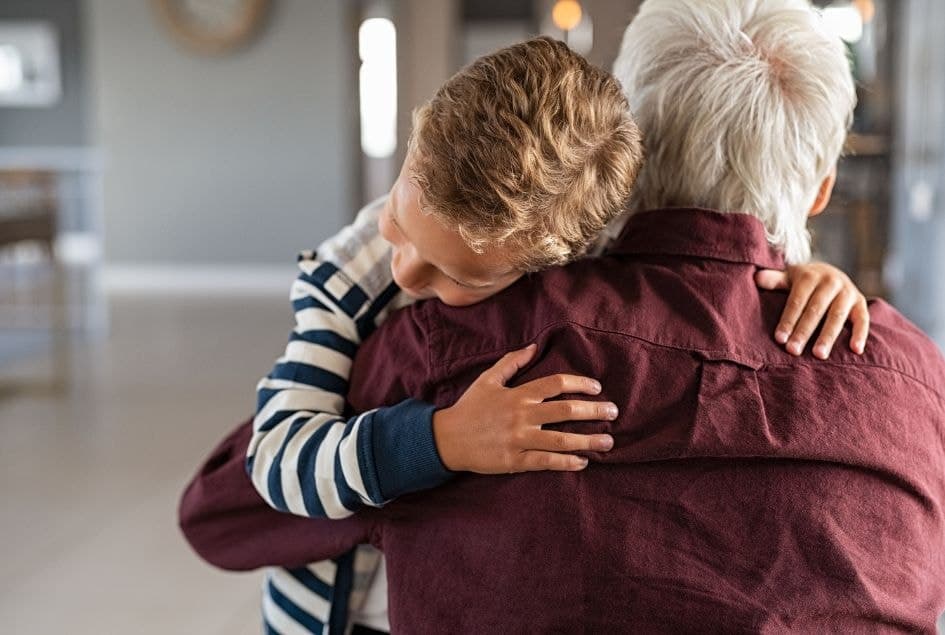From the earliest moments of life, humans seek connection. The need to feel close, safe, and emotionally secure is hardwired into us. Attachment theory helps explain how these early experiences shape our relationships across our lifespan.
But what happens when those early attachments are inconsistent, overwhelming, or absent? The result often appears in our adult relationships through the ways we connect, trust, resolve conflict, and love. This article explores the psychology behind attachment issues, how they affect romantic relationships, and what we can do to build healthier, more secure bonds.
What Is Attachment Theory? How Early Bonds Shape Future Relationships
Attachment theory, developed by British psychiatrist John Bowlby, highlights how emotional bonds with a primary caregiver in early life create mental blueprints or “working models” that shape emotional well-being and future relationships. These early experiences, especially in the face of emotional neglect or unresolved trauma, influence how we behave in adult romantic relationships.
As Simpson and Rholes (2017) explain, attachment orientations are activated during stress and guide our emotional attachment and responses.
The Four Attachment Styles in Romantic Relationships
Research on adult attachment has identified four main styles. Each of the four attachment styles influences how a person gives and receives love, handles closeness, and manages conflict.
1. Secure Attachment Style: The Foundation of a Healthy Relationship
Securely attached people tend to feel secure in themselves and their relationships. They can tolerate emotional intimacy, express needs appropriately, and offer consistent support to their partners. This style fosters healthy relationships, emotional safety, and fulfilling, stable relationships.
2. Anxious Attachment Style: Intense Fear of Abandonment and Constant Reassurance Seeking
People with an anxious attachment style often experience an intense fear of rejection or abandonment. They often use hyperactivating strategies to get closer to their partners, such as seeking reassurance, overanalyzing interactions, or clinging during conflict (Simpson & Rholes, 2017).
They crave closeness but may rely on protest behaviors and constant reassurance to feel secure. These anxious styles are marked by emotional highs and lows and a heightened sensitivity to their partner’s behavior.
3. Avoidant Attachment Style: Tendency to Withdraw and Suppress Emotion
Avoidant individuals value independence and often view emotional closeness as overwhelming. They suppress emotions, avoid physical contact, and may withdraw in times of conflict, making it difficult to build healthy emotional attachment.
When stressed, they tend to withdraw or emotionally disengage, using deactivating strategies to maintain a sense of control and autonomy (Simpson & Rholes, 2017).
4. Fearful-Avoidant (Disorganized) Attachment
Disorganized attachment, also called fearful-avoidant, includes traits of both anxious and avoidant attachment styles. These individuals may long for connection but simultaneously fear it. This creates confusing and ambiguous behaviors that can destabilize intimate relationships, often rooted in trauma or inconsistent caregiving.
Attachment styles exist on a spectrum and are not fixed. Life experiences, therapy, and relationships can shift someone toward a more secure style.
Signs of Insecure Attachment Styles in Romantic Relationships
Attachment issues in relationships refer to patterns of insecurity that interfere with emotional connection and healthy functioning. These issues may include:
- Fear of abandonment or rejection
- Difficulty trusting others or opening up
- Emotional withdrawal or shutdown during conflict
- Clinginess or controlling behaviors
- Poor emotional regulation
- Difficulty maintaining intimacy over time
These patterns often stem from early attachment problems and unresolved trauma. Such children may grow into adults with a distorted view of love and connection.

How Attachment Styles Shape Romantic Relationships
Attachment styles influence how we choose partners, communicate, express needs, respond to stress, and interpret our partners’ behavior.
Stress and Emotional Regulation
Simpson and Rholes (2017) found that attachment styles play a critical role in how people respond to stress. Anxiously attached individuals tend to ruminate, seek excessive reassurance, and feel heightened emotional distress.
Avoidant individuals, on the other hand, suppress their emotions and avoid support-seeking behaviors. These opposing reactions can lead to major relational difficulties, especially when one partner’s need for closeness is met with the other’s need for space.
Relationship Satisfaction and Mental Health
Research shows that secure attachment correlates strongly with relationship satisfaction and psychological well-being. A cross-sectional study by Sagone et al. (2023) found that individuals with secure attachment styles, marked by confidence and trust, had higher psychological well-being than those with insecure styles.
Conversely, those with anxious or avoidant attachment reported more emotional distress, lower self-esteem, and decreased life satisfaction.
Secure individuals are more likely to manage conflict constructively and support their partners effectively. Insecure attachment, especially when not acknowledged or addressed, often results in communication breakdowns, unmet emotional needs, and long-term dissatisfaction.
Can Attachment Issues Ruin a Relationship?
Yes, attachment issues can significantly strain or even end relationships. For example, when one partner seeks closeness and the other retreats, it creates a cycle of misunderstanding and emotional pain.
An anxious partner may feel constantly insecure, while an avoidant partner may feel overwhelmed or suffocated.
If left unaddressed, these patterns can erode trust, intimacy, and satisfaction. However, it’s important to note that these issues are not permanent. With insight, effort, and support, people can develop healthier attachment patterns.
Can You Heal Attachment Issues?
While attachment styles stem from early experiences, they are not set in stone. Healing is possible. Here are a few ways individuals can begin to shift toward secure attachment:
1. Therapy
Therapeutic approaches like Emotionally Focused Therapy (EFT), Attachment-Based Therapy, and Internal Family Systems (IFS) are especially effective in addressing attachment wounds. Therapy provides a safe space to explore patterns, understand emotional triggers, and develop new relational skills.
2. Awareness and Education
Understanding your attachment style is a powerful first step. Tools like the Attachment Style Questionnaire (ASQ), used in the study by Sagone et al. (2023), can help increase self-awareness. Education helps reframe behaviors not as flaws but as protective adaptations.
3. Secure Relationships
Supportive, emotionally available relationships can help heal attachment wounds. Experiencing consistent care, respect, and responsiveness gradually reshapes internal working models and increases emotional security.
4. Boundary and Communication Work
Healthy attachment involves knowing how to express needs clearly, set boundaries, and handle emotional discomfort. Learning to communicate assertively, rather than through protest behaviors or avoidance, helps foster more stable connections.
Attachment and Life Stages
Attachment styles can shift over time. According to Sagone et al. (2023), younger adults are more likely to experience anxious attachment, while middle-aged adults often show increased avoidance.
Furthermore, individuals in stable romantic relationships tend to report higher levels of psychological well-being and secure attachment traits compared to those who are single.
This suggests that both personal growth and positive relationships play a role in shaping attachment across the lifespan.

When Attachment Styles Clash: The Anxious-Avoidant Trap
One of the most challenging pairings in relationships is when an anxious person partners with an avoidant person. This dynamic often leads to a painful cycle:
- The anxious partner seeks closeness and reassurance.
- The avoidant partner withdraws to preserve independence.
- The anxious partner feels rejected and protests more.
- The avoidant partner pulls away further to avoid being emotionally overwhelmed.
This push-pull pattern can be deeply frustrating and emotionally exhausting for both individuals. Healing this dynamic requires both partners to recognize their patterns, validate each other’s needs, and meet in the middle with empathy and intentional communication.
What Secure Attachment Looks Like
Secure attachment is not about being perfect or never needing help. It is about feeling confident in your worth, trusting others, and being able to manage both closeness and independence. In relationships, secure attachment often looks like:
- Open, honest communication
- Mutual respect for autonomy and closeness
- Willingness to repair after conflict
- Trust, dependability, and emotional safety
- Flexibility and emotional regulation
Secure attachment allows partners to face stress, conflict, and life transitions as a team rather than adversaries. Individuals with secure attachment tend to approach relationships with a balance of confidence and vulnerability.
They are not afraid to express their needs or emotions, nor are they threatened by a partner’s independence. This style fosters resilience within the relationship, allowing both partners to feel seen, heard, and supported. When challenges arise, secure individuals are more likely to seek solutions collaboratively rather than resort to blame or withdrawal.
Their emotional attunement and ability to co-regulate with a partner create a foundation of trust that can weather difficult moments. In essence, secure attachment offers a stable emotional base from which love and intimacy can grow.
Awareness Is the First Step Toward Change
Attachment styles influence much more than how we love. They affect our sense of self, how we handle stress, and the way we interpret others’ behaviors. Understanding your attachment style and your partner’s can unlock new levels of empathy, compassion, and connection.
Attachment issues do not have to define your love life. They can be understood, worked through, and healed. With self-awareness, support, and patience, it is possible to build stronger, healthier, and more secure relationships.
Learn How To Build a Healthy Relationship with Professional Help
Understanding adult attachment styles and how they influence your relationships is the first step toward breaking negative patterns and building a stronger bond with your friends, co-workers, romantic partner, etc.
Whether you’re struggling with unhealthy attachment issues, repeating old cycles, or having difficulty setting appropriate boundaries, working with a mental health professional can help you explore different attachment styles and create meaningful change.
It’s okay to seek support—you don’t have to navigate unhealthy styles alone. Mental Health Resource can connect you with the right professional to guide you in healing, improving self-awareness, and fostering deeper, healthier connections. Contact our team today.
FAQs: Attachment Issues in Relationships
Unhealthy attachment often stems from early experiences with a primary caregiver, especially when emotional needs were inconsistently met or ignored. These early patterns can result in an insecure attachment style, such as anxious, avoidant, or disorganized attachment, which can make it difficult to form meaningful relationships later in life.
The four main attachment styles—secure, anxious, avoidant, and disorganized attachment style—shape how we bond emotionally, express needs, and handle conflict. While securely attached individuals tend to enjoy fulfilling relationships, an insecurely attached person may struggle with emotional attachment, trust, or fear of rejection, all of which can impact intimate relationships.
People with an anxious attachment style tend to have a negative self view and a heightened sensitivity to rejection. They often rely on reassurance to manage negative emotions and may feel overwhelmed when their needs aren’t immediately met. This can create emotional instability and disrupt healthy communication in relationships.
Yes! With self-awareness, therapy, and healthy relational experiences, it’s possible to shift toward a more secure attachment style. Recognizing patterns associated with an insecure attachment, such as unhealthy emotional attachment or avoidance of vulnerability, is a powerful first step toward healing and building secure attachment style traits.
Attachment theory suggests that early relationships with caregivers form “working models” for how we perceive love, trust, and connection. If those early experiences were unstable or emotionally neglectful, an insecure attachment style—such as ambivalent attachment style, avoidant attachment, or disorganized attachment—may develop. These patterns can create challenges in adult relationships, but are absolutely possible to unlearn and heal from.
References
Sagone, E., Commodari, E., Indiana, M. L., & La Rosa, V. L. (2023). Exploring the association between attachment style, psychological well-being, and relationship status in young adults and adults: A cross-sectional study. European Journal of Investigation in Health, Psychology and Education, 13(3), 525–539. https://doi.org/10.3390/ejihpe13030040
Simpson, J. A., & Rholes, W. S. (2017). Adult attachment, stress, and romantic relationships. Current Opinion in Psychology, 13, 19–24. https://doi.org/10.1016/j.copsyc.2016.04.006
Fraley, R. C. (n.d.). Attachment in adults: Theory, research, and implications for clinical practice. Retrieved from https://labs.psychology.illinois.edu/~rcfraley/attachment.htm

